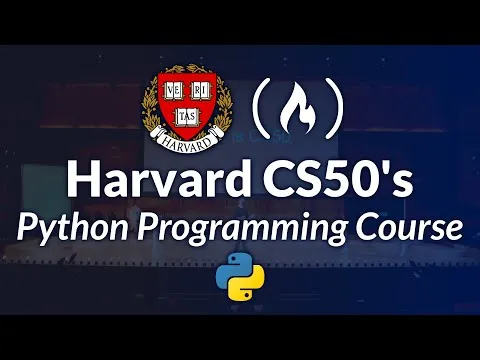
Multithreading and Parallel Computing in Java 
This course provides an introduction to multithreading and parallel computing in Java, ideal for beginners. Through detailed instruction, users can gain a comprehensive understanding of the fundamentals of multithreading and parallel computing. ▼
ADVERTISEMENT
Course Feature
![]() Cost:
Cost:
Paid
![]() Provider:
Provider:
Eduonix
![]() Certificate:
Certificate:
No Information
![]() Language:
Language:
English
![]() Start Date:
Start Date:
Self Paced
Course Overview
❗The content presented here is sourced directly from Eduonix platform. For comprehensive course details, including enrollment information, simply click on the 'Go to class' link on our website.
Updated in [March 06th, 2023]
Eduonix's Multithreading and Parallel Computing in Java course is designed for beginners to learn the basics of multithreading and parallel computing in Java. This course covers topics such as threading, synchronization, thread pools, executors, and parallel streams. It also covers the fundamentals of parallel computing, such as the Fork/Join framework, parallel arrays, and the Java 8 Stream API. By the end of the course, users will have a better understanding of how to use multithreading and parallel computing in Java to improve the performance of their applications.
[Applications]
The application of the course on Multithreading and Parallel Computing in Java can be seen in various areas. It can be used to develop high-performance applications, such as web servers, databases, and distributed systems. It can also be used to develop applications that require parallel processing, such as image processing, scientific computing, and machine learning. Additionally, it can be used to develop applications that require synchronization between multiple threads, such as multi-player games and web services. Finally, it can be used to develop applications that require efficient use of resources, such as mobile applications and embedded systems.
[Career Paths]
1. Java Developer: Java developers are responsible for developing and maintaining applications using the Java programming language. They are also responsible for writing code, debugging, and testing applications. With the increasing demand for faster and more efficient applications, the need for Java developers with knowledge of multithreading and parallel computing is growing. As such, Java developers with knowledge of multithreading and parallel computing will be in high demand in the near future.
2. Software Engineer: Software engineers are responsible for designing, developing, and testing software applications. With the increasing demand for faster and more efficient applications, software engineers with knowledge of multithreading and parallel computing will be in high demand in the near future.
3. Database Administrator: Database administrators are responsible for managing and maintaining databases. With the increasing demand for faster and more efficient applications, database administrators with knowledge of multithreading and parallel computing will be in high demand in the near future.
4. Cloud Computing Engineer: Cloud computing engineers are responsible for designing, developing, and managing cloud-based applications. With the increasing demand for faster and more efficient applications, cloud computing engineers with knowledge of multithreading and parallel computing will be in high demand in the near future.
[Education Paths]
1. Bachelor of Science in Computer Science: This degree program provides students with a comprehensive understanding of computer science fundamentals, including programming, software engineering, computer architecture, and operating systems. Students will also learn about the latest trends in computer science, such as artificial intelligence, machine learning, and cloud computing. This degree is ideal for those looking to pursue a career in software development, computer engineering, or computer systems analysis.
2. Master of Science in Computer Science: This degree program provides students with an advanced understanding of computer science topics, such as algorithms, data structures, computer networks, and software engineering. Students will also learn about the latest trends in computer science, such as artificial intelligence, machine learning, and cloud computing. This degree is ideal for those looking to pursue a career in software development, computer engineering, or computer systems analysis.
3. Master of Science in Artificial Intelligence: This degree program provides students with an advanced understanding of artificial intelligence topics, such as machine learning, natural language processing, and computer vision. Students will also learn about the latest trends in artificial intelligence, such as deep learning, reinforcement learning, and robotics. This degree is ideal for those looking to pursue a career in artificial intelligence, machine learning, or data science.
4. Doctor of Philosophy in Computer Science: This degree program provides students with an in-depth understanding of computer science topics, such as algorithms, data structures, computer networks, and software engineering. Students will also learn about the latest trends in computer science, such as artificial intelligence, machine learning, and cloud computing. This degree is ideal for those looking to pursue a career in research or academia.
Pros & Cons

Informative, Very good, Excellent presentation, Great start.

None.
Course Provider

Provider Eduonix's Stats at AZClass
Multithreading and Parallel Computing in Java Introduction to multithreading and parallel computing in Java is very suitable for beginners. Through this course, learners can have a comprehensive understanding of multithreading and parallel computing in Java. They will learn the basics of multithreading, such as thread creation, synchronization, and thread scheduling. They will also explore various techniques for parallel computing, such as thread pools, executors, and parallel streams. Additionally, learners will learn about the various tools and libraries available in Java for multithreading and parallel computing. Finally, learners will understand best practices for developing efficient and reliable multithreaded applications.
Discussion and Reviews
0.0 (Based on 0 reviews)
Explore Similar Online Courses

Climate Change Science

ClickBank Affiliate Marketing Success for Beginners

RDBMS PostgreSQL

Intro To PostgreSQL Databases With PgAdmin For Beginners

PostgreSQL: Client Applications

Mastering SQL using Postgresql

Database Design and Basic SQL in PostgreSQL

PostgreSQL: Advanced Queries

Spatial SQL with Postgres : A language for geographers

Learn SQL Using PostgreSQL: From Zero to Hero

PostgreSQL Essential Training


Start your review of Multithreading and Parallel Computing in Java